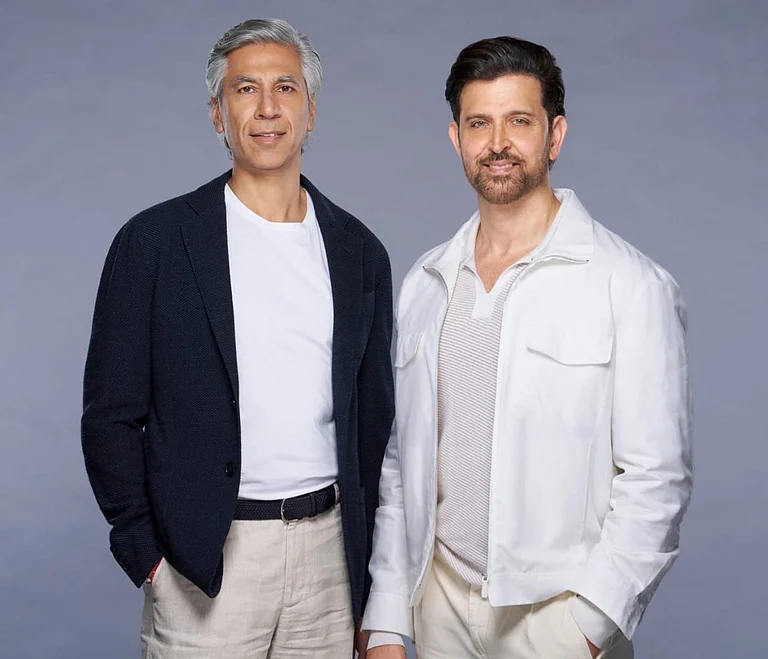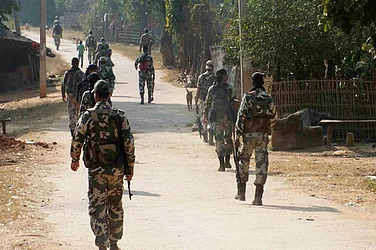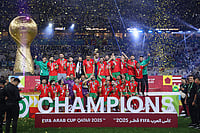On December 1, 2022, India took over the presidency of G20 from Indonesia. The theme of the summit is 'Vasudhaiva Kutumbakam' (One Earth, One Family, One Future).
The G20 comprises 19 countries and the European Union (EU). Together, they account for over 80 per cent of the global GDP, 75 per cent of international trade and two-thirds of the world population. Therefore, being the host country, the world will be looking at India with some optimism as far as addressing global challenges is concerned.
It is also an opportunity for India to showcase to the world what it can offer to resolve some of the major priority issues revolving around inclusive and sustainable growth, achieving targets of sustainable development goals (SDGs), public digital infrastructure, reforms of multilateral financial institutions, and maintaining peace and harmony across the globe.
Demolitions and the Urban Divide
India is leaving no stone unturned to capitalise on the G20 presidency under the leadership of Prime Minister Narendra Modi. One particular effort in this direction has been the beautification drive undertaken by various civic body organisations throughout the country. All the cities, where G20 meetings are scheduled, have developed special plans to revamp the city with road upgrade beautification projects eviction and demolition drives. From the capital Delhi in the north to Vizag in the south, Itanagar in the east to Mumbai in the west, the beautification and clearance drive has gripped the country. However, this is not something new phenomenon. For reasons ranging from beautification to slum clearance to the construction of infrastructure to security, many Indian cities have earlier experienced forced evictions, mostly of the most vulnerable segments of the population. Whether the 2010 Commonwealth Games in Delhi or the Men’s Hockey World Cup of 2018 in Bhubaneshwar, every time a major world event the country has hosted, eviction and demolition of homes of urban poor in the name of beautification and development is rampant.
Slum demolition remains the major cause of displacement in contemporary Indian cities. Although slums are looked upon as a blot on the aesthetics of city life, it needs to be remembered that the existence of slums is a testament to the failure of the state to provide the urban poor with affordable housing. By demolishing and making them nonexistent, the state tries to shrug off its responsibility as a protector of the life and livelihood of its citizens. Most of these forced evictions and demolitions take place under the watch of the state in collusion with the private firms who are being tasked to remake the urban landscape. Slum dwellers and migrants have especially bore the brunt of these developmental measures, a major part of them belonging to the Scheduled Caste (SC) and Scheduled Tribe (ST). According to the Housing and Land Rights Network (HRLN), in 2021 only, approximately 36,000 houses were demolished across the country leading to the eviction of 2 lakh people. It invariably affects the poorest, most socially and economically vulnerable and marginalized sectors of society, especially women and children.
United Nations Committee on Economic, Social and Cultural Rights defines forced eviction as “the permanent or temporary removal against the will of individuals, families or communities from their homes or land, which they occupy, without the provision of, and access to, appropriate forms of legal or other protection”. Forced evictions constitute gross violations of a range of internationally recognized human rights, including the human rights to adequate housing, food, water, health, education, work, security of the person, and freedom of movement. When forcefully evicted, they are thrown out of their workplace, without providing any alternative. The majority of them are either self-employed or engaged in an informal economy without any robust legal mechanism to protect their livelihood. Instead of providing meaningful employment opportunities to its citizens, the state takes away their means of survival all in the name of beautification, slum clearance and development.
Normalising Inequality
India is a country with huge diversity and complexities. The diversity which the country has always cherished is also, unfortunately, brewed in us the sense of being of unequal worth. The social and cultural divide is reflected in our physical segregation. Historically, segregated living has been a feature of India, rural as well as urban. In rural areas, the segregation is more along caste lines whereas in urban areas it is along caste, class as well as religious divides. The areas inhabited by the low caste, poor people and religious minority groups are often addressed pejoratively and remain neglected on the part of the civic agencies. In most Indian cities, the core areas have remained the privilege of the upper and the middle classes whereas those belonging to the lower class and caste have mostly been concentrated in areas designated as slums. Although those living in slums contribute significantly to maintaining the pace and aesthetics of urban life enjoyed by the upper and middle class, their presence is always controlled and monitored. There is a systematic tendency towards increasing inequality, making the disadvantaged sections of society more vulnerable which lies at the core of the neoliberal economy.
Throughout the history of human existence, inequality has been considered normal and natural. Most of us cannot even think whether it is possible to create an egalitarian world and, therefore, the idea and its possibility are plainly refuted as utopia. We are raised and socialised in a highly unequal socio-cultural environment. The idea of living in an unequal world, considering it as normal and desirable, has so deeply ingrained in us that equality appears to be more problematic than accepting the normalcy of inequality. Our ideas, perceptions, beliefs, and actions, every aspect of social life is more a function of inequality rather than the cherished ideals of liberty, equality, and fraternity. Demolitions, forced evictions and displacement all are rooted in our unequal worldview. One of the targets of the United Nations (UN) Sustainable Development Goals (SDGs) is to make cities and human settlements inclusive, safe, resilient and sustainable (goal 11). It means ensuring access to safe and affordable housing, upgrading slum settlements, investing in public transport, creating green spaces, and improving urban planning and management in a way that is both participatory and inclusive. Despite all the lofty claims for making cities safe and inclusive, our urban spaces remain a divided world. As per UN estimates, between 2014 and 2018, the proportion of the urban population living in slums worldwide increased from 23 per cent to 24 per cent, which makes up over 1 billion slum dwellers.
An Opportunity not to be Missed
It may be too early to say anything about the outcome of India’s hosting of the current edition of the G20 summit but the model itself is not a good model to promote inclusive growth and development. G20 membership is grossly lop-sided. Africa is under-represented and Europe is over-represented. Low-income countries have no representation at all. India, at one time being the colony of the British, knows better the cost of subjugation. It should be the spokesperson for the representation of the under-represented instead of being a party to the neoliberal onslaught.
Instead of breaking the wall between the rich and the poor, neglected and the privileged, putting up coloured curtains and barricades to beautify the country will make the wall more resilient and unbreakable. Until and unless such beautification and redevelopment drives address the issues of its urban poor, the idea of an inclusive city will remain elusive. There is a need to make people divided by caste, class, language, and religion as part of one family with one future. India cannot afford to be divided into families with different futures.
(Imtiaz Ahmed Ansari is a Sociologist who currently teaches at Jamia Milia Islamia University)
























